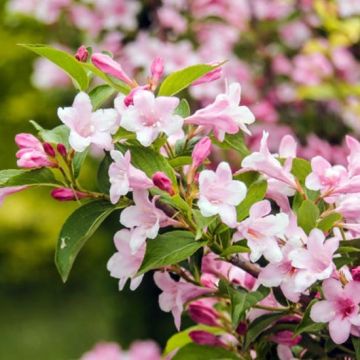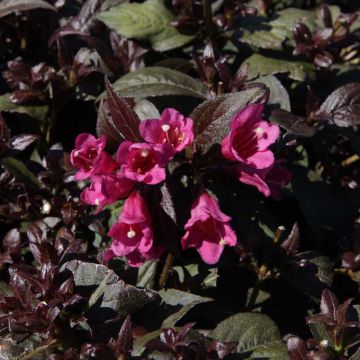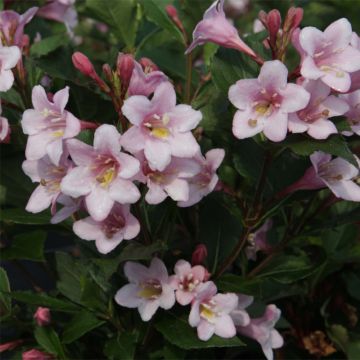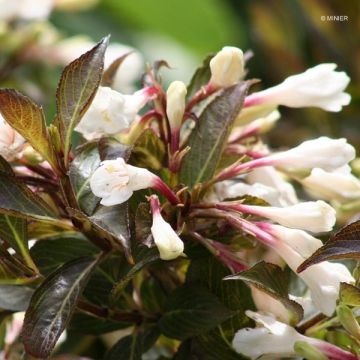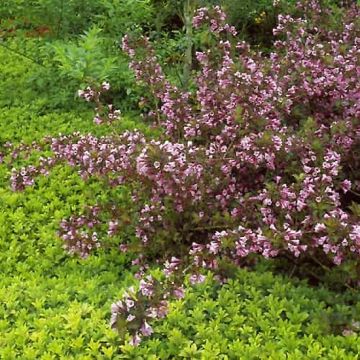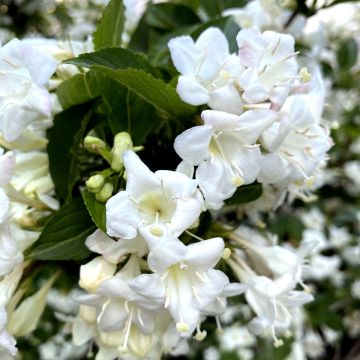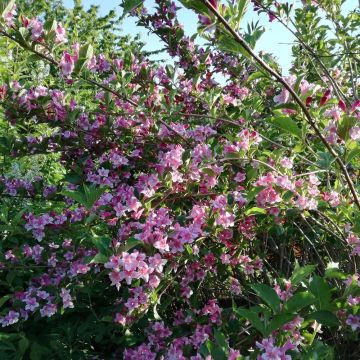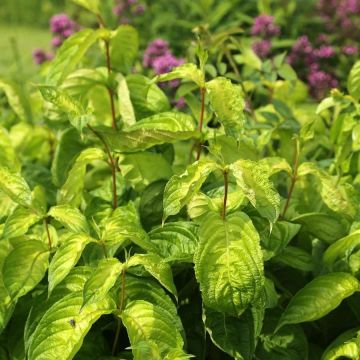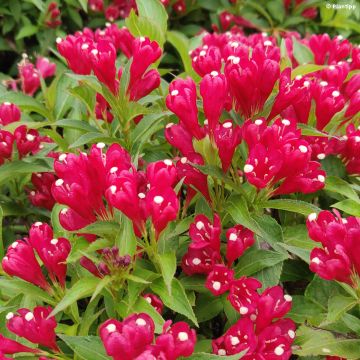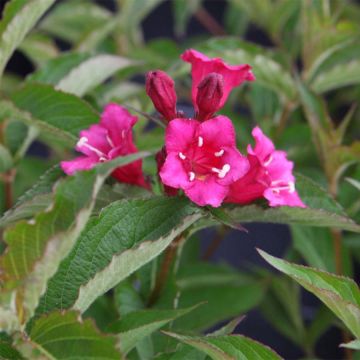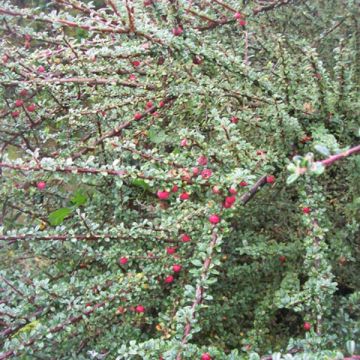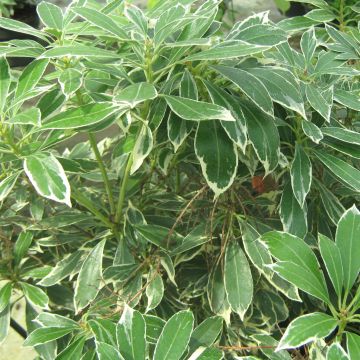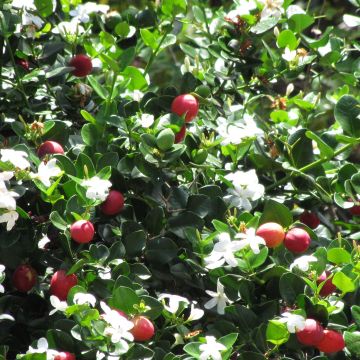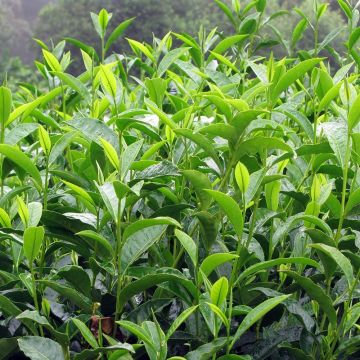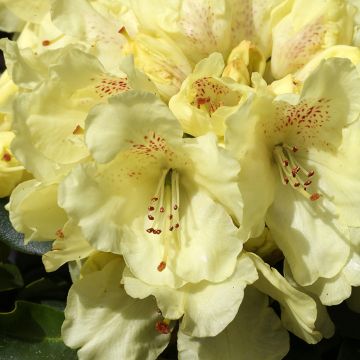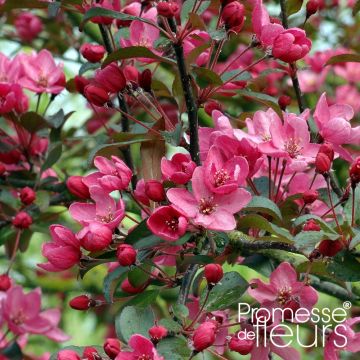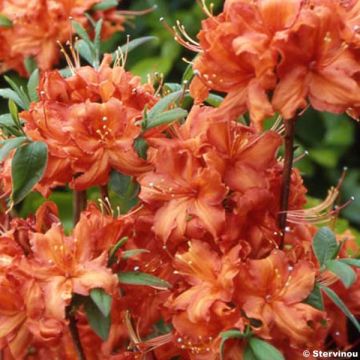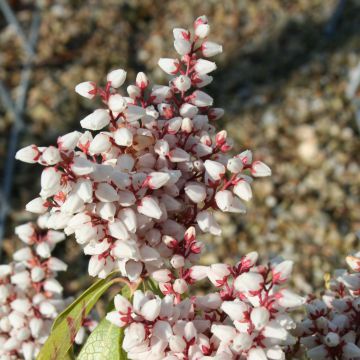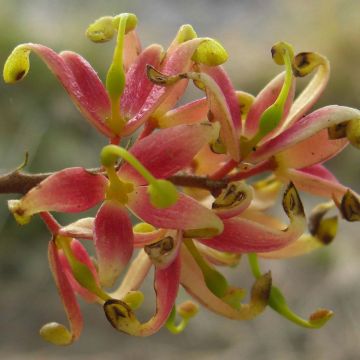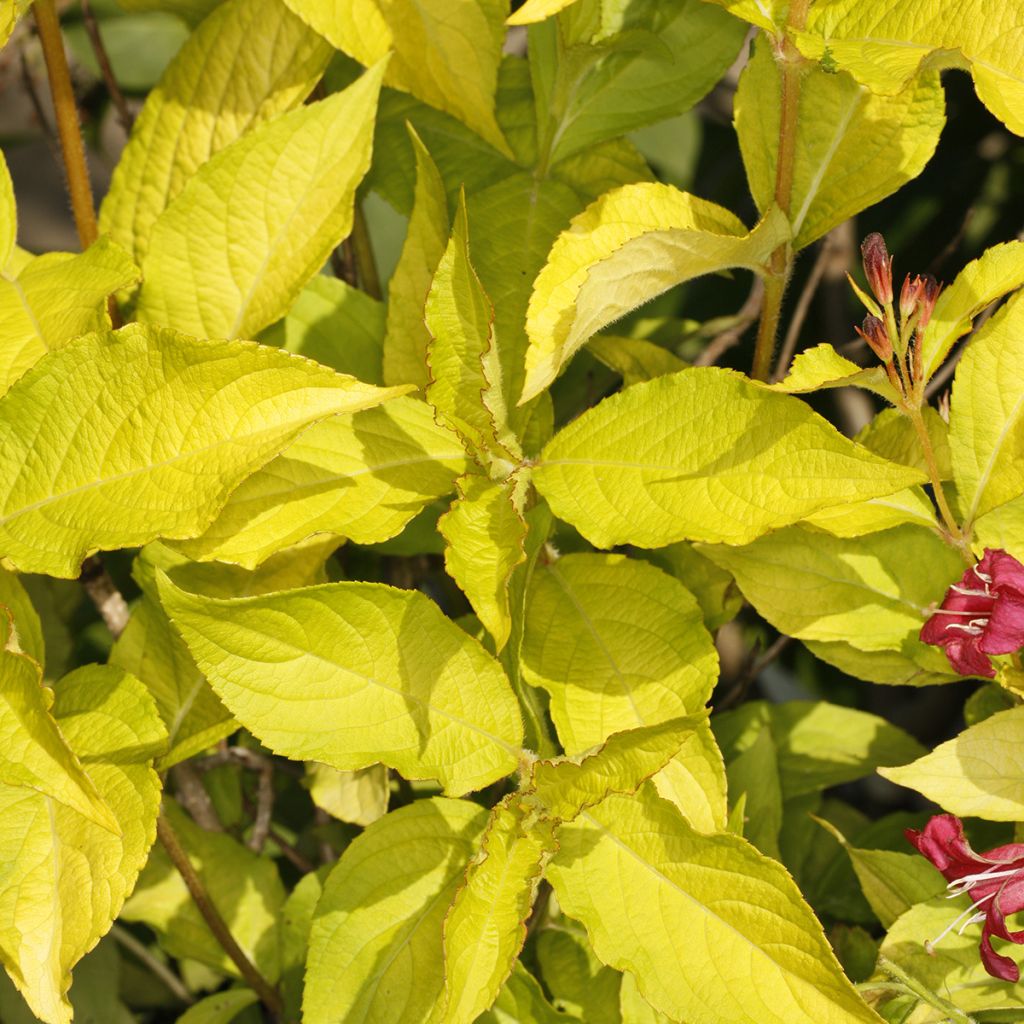

Weigela Briant Rubidor
Weigela Briant Rubidor
Weigela Briant Rubidor® Olympiade
This item cannot be shipped to the selected country
Delivery charge from €5.90
More information
Schedule delivery date,
and select date in basket
This plant carries a 24 months recovery warranty
More information
We guarantee the quality of our plants for a full growing cycle, and will replace at our expense any plant that fails to recover under normal climatic and planting conditions.
From €5.90 for pickup delivery and €6.90 for home delivery
Express home delivery from €8.90.
Does this plant fit my garden?
Set up your Plantfit profile →
Description
Weigela Briant Rubidor 'Olympiade' stands out for its very original golden foliage, which contrasts with the bright red of its flowering. It is very interesting as a hedge or in a bed, as it offers a diversity of foliage and plays an ecological role by attracting bees. Vigorous, robust, and not very demanding, it adapts to all well-drained soils, whether sunny or semi-shaded. Under very hot climates, some caution is necessary when choosing the planting location, as exposure to intense sunlight can sometimes cause leaf scorch. To obtain a well-flowering plant, pruning is essential. As it blooms mainly on the previous year's wood, it is beneficial to prune the flowering branches by a third or half just after flowering in August to allow enough time for the emergence of new branches that will in turn produce flowers the following year.
The genus Weigela (or Weigelia) includes about a dozen species of deciduous shrubs, with a spreading or erect habit, growing in thickets and on the edge of forests in eastern Asia. It belongs to the Caprifoliaceae family, like Abelia, Heptacodium, Leycesteria, Lonicera, or Symphoricarpos. The designation Weigela comes from Weigel, with the suffix -a or -ia, created in memory of the German professor and botanist Christian Ehrenfield von Weigel (1748-1831).
The Briant Rubidor 'Olympiade' variety was obtained by the Pépinières André Briant Jeunes plants around 1980. It comes from a branch sport of the 'Bristol Ruby' variety with the same bright red flowers but variegated and golden foliage that distinguishes it easily from the original plant with dark green foliage. It forms a bushy shrub with a rounded habit, dense and branching, reaching a height and spread of 1.50 to 2 m. The deciduous foliage is composed of elliptical to obovate, opposite leaves, measuring about 6 to 10 cm long, pointed at the tip. Its colouration evolves throughout the seasons, first yellow-green in spring, then bright yellow during summer, and sometimes taking a nice variegation, with a green central spot bordered by yellow. The flowering, with a beautiful intensity, covers the entire shrub in May and June, with some weaker and very random reblooms during the rest of summer. The flowers appear individually or in clusters on the previous year's branches, in the form of a dark red funnel about 3 cm long, with the white stamens clearly visible in the centre. It is not necessary to remove faded flowers as they disappear on their own. This flowering is nectar-rich.
Weigela Briant Rubidor is a vigorous and hardy shrub, resistant up to -30°C. Maintenance is simple and ordinary, moist, and well-drained soil is sufficient for its good development. It offers a bright spring and summer flowering and very attractive foliage, which offers many uses in the garden. It is ideal for forming a mixed hedge of medium height or a beautiful backdrop for perennial or shrub beds. It can also be planted alongside Aronia, Amélanchier, Elders, Japanese Privet, Lilacs, or Viburnum to welcome garden wildlife. With its long flowering period and dense habit, this Weigela will also be perfect for creating a flowering hedge together with spireas, Deutzia, Butterfly Bushes, and many other Hedge Shrubs.
Report an error about the product description
Plant habit
Flowering
Foliage
Botanical data
Weigela
Briant Rubidor® Olympiade
Caprifoliaceae
Cultivar or hybrid
Other Weigela
Planting and care
Weigela Briant Rubidor thrives in sunny or semi-shady locations. Plant it in ordinary, moist but well-drained soil, preferably in autumn so that it can establish well before summer, or alternatively in spring. This bush is very adaptable and can tolerate slightly acidic, neutral, or even slightly alkaline soil pH. Dig a hole about 50 cm in all directions, add some planting compost and mix it with the existing soil. Soak the root ball of your Weigela in a bucket for fifteen minutes before planting it in the hole. Fill in the hole and water generously. Water regularly during the first year, and during hot periods in the following years.
Planting period
Intended location
Care
This item has not been reviewed yet - be the first to leave a review about it.
Spring-flowering shrubs
Haven't found what you were looking for?
Hardiness is the lowest winter temperature a plant can endure without suffering serious damage or even dying. However, hardiness is affected by location (a sheltered area, such as a patio), protection (winter cover) and soil type (hardiness is improved by well-drained soil).

Photo Sharing Terms & Conditions
In order to encourage gardeners to interact and share their experiences, Promesse de fleurs offers various media enabling content to be uploaded onto its Site - in particular via the ‘Photo sharing’ module.
The User agrees to refrain from:
- Posting any content that is illegal, prejudicial, insulting, racist, inciteful to hatred, revisionist, contrary to public decency, that infringes on privacy or on the privacy rights of third parties, in particular the publicity rights of persons and goods, intellectual property rights, or the right to privacy.
- Submitting content on behalf of a third party;
- Impersonate the identity of a third party and/or publish any personal information about a third party;
In general, the User undertakes to refrain from any unethical behaviour.
All Content (in particular text, comments, files, images, photos, videos, creative works, etc.), which may be subject to property or intellectual property rights, image or other private rights, shall remain the property of the User, subject to the limited rights granted by the terms of the licence granted by Promesse de fleurs as stated below. Users are at liberty to publish or not to publish such Content on the Site, notably via the ‘Photo Sharing’ facility, and accept that this Content shall be made public and freely accessible, notably on the Internet.
Users further acknowledge, undertake to have ,and guarantee that they hold all necessary rights and permissions to publish such material on the Site, in particular with regard to the legislation in force pertaining to any privacy, property, intellectual property, image, or contractual rights, or rights of any other nature. By publishing such Content on the Site, Users acknowledge accepting full liability as publishers of the Content within the meaning of the law, and grant Promesse de fleurs, free of charge, an inclusive, worldwide licence for the said Content for the entire duration of its publication, including all reproduction, representation, up/downloading, displaying, performing, transmission, and storage rights.
Users also grant permission for their name to be linked to the Content and accept that this link may not always be made available.
By engaging in posting material, Users consent to their Content becoming automatically accessible on the Internet, in particular on other sites and/or blogs and/or web pages of the Promesse de fleurs site, including in particular social pages and the Promesse de fleurs catalogue.
Users may secure the removal of entrusted content free of charge by issuing a simple request via our contact form.
The flowering period indicated on our website applies to countries and regions located in USDA zone 8 (France, the United Kingdom, Ireland, the Netherlands, etc.)
It will vary according to where you live:
- In zones 9 to 10 (Italy, Spain, Greece, etc.), flowering will occur about 2 to 4 weeks earlier.
- In zones 6 to 7 (Germany, Poland, Slovenia, and lower mountainous regions), flowering will be delayed by 2 to 3 weeks.
- In zone 5 (Central Europe, Scandinavia), blooming will be delayed by 3 to 5 weeks.
In temperate climates, pruning of spring-flowering shrubs (forsythia, spireas, etc.) should be done just after flowering.
Pruning of summer-flowering shrubs (Indian Lilac, Perovskia, etc.) can be done in winter or spring.
In cold regions as well as with frost-sensitive plants, avoid pruning too early when severe frosts may still occur.
The planting period indicated on our website applies to countries and regions located in USDA zone 8 (France, United Kingdom, Ireland, Netherlands).
It will vary according to where you live:
- In Mediterranean zones (Marseille, Madrid, Milan, etc.), autumn and winter are the best planting periods.
- In continental zones (Strasbourg, Munich, Vienna, etc.), delay planting by 2 to 3 weeks in spring and bring it forward by 2 to 4 weeks in autumn.
- In mountainous regions (the Alps, Pyrenees, Carpathians, etc.), it is best to plant in late spring (May-June) or late summer (August-September).
The harvesting period indicated on our website applies to countries and regions in USDA zone 8 (France, England, Ireland, the Netherlands).
In colder areas (Scandinavia, Poland, Austria...) fruit and vegetable harvests are likely to be delayed by 3-4 weeks.
In warmer areas (Italy, Spain, Greece, etc.), harvesting will probably take place earlier, depending on weather conditions.
The sowing periods indicated on our website apply to countries and regions within USDA Zone 8 (France, UK, Ireland, Netherlands).
In colder areas (Scandinavia, Poland, Austria...), delay any outdoor sowing by 3-4 weeks, or sow under glass.
In warmer climes (Italy, Spain, Greece, etc.), bring outdoor sowing forward by a few weeks.

































